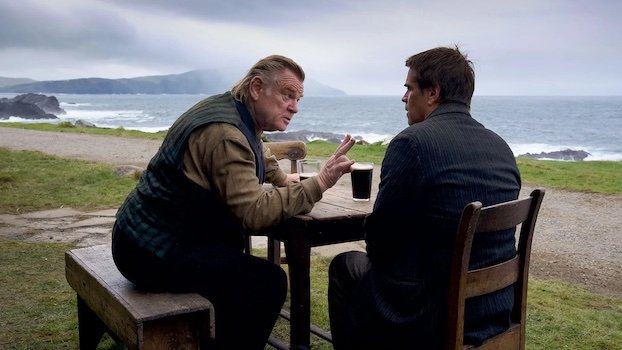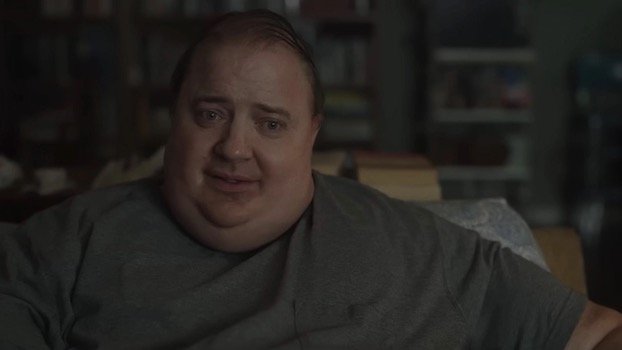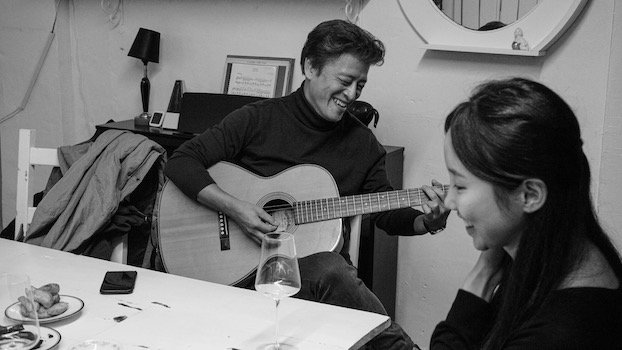My 20 Favourite 2022 Releases
So far, the 2020s haven’t been a great decade for movies, and 2022 was a year of many cinematic disappointments and mediocrities. But why dwell on the negative? Since there’s a possible future where movies are replaced altogether by faddish miniseries that linger in the mind as long as an Instagram story, in the meantime we should take what we can get. So, here’s what cinematic pleasure I got last year at the movies.
20. Decision to Leave (directed by Chan-wook Park)
It’s an odd moment in international film when this violent thriller and supposedly twisted character study is also funnier than most films released in any language. I wasn’t as bowled-over by this movie as others; it’s a detective story that covers two murder cases, but I found the second case to be a hastily-sketched afterthought compared to the first. The precise psychological situation of Wei Tang’s femme fatale is the movie’s primary interest, but I’m hard-pressed to see what anyone well-versed in Film-Noir found surprising about this character, besides what could be credited to the sultry charms of Tang’s performance. Those charms are not insignificant, though, and neither is the hangdog charisma of Hae-il Park as the detective. Above all, if you ask me, is the movie’s frequency of effective jokes, a rare commodity in movies today.
19. Black Panther: Wakanda Forever (directed by Ryan Coogler)
Listen, we all hate these movies, and we’re right and noble to hate them, but in order to properly and righteously hate them, we must admit it when they (mostly) transcend the reasons we hate them in the first place. In other words, this is a pretty good movie. Although there are stretches that are as drearily pedestrian as your average Marvel movie (everything with Bilbo), there are some sequences of real inspiration. The introduction of the villain is, shockingly, actually frightening, and that villain is played with imposing presence and impressive dignity by Tenoch Huerta. A few of the action sequences have more visual imagination than most of what you’ll see at the theater these days. This will sound like absurd contrarianism, but I found the underwater sequences in this to be a lot stranger and more creatively stimulating than comparable scenes in the Avatar sequel. Letitia Wright makes a fine reluctant hero, vaccine or no vaccine. Lastly, I think this film dealt with Chadwick Boseman’s death with sublime tact.
18. Babylon (directed by Damien Chazelle)
I’m not crazy about Chazelle but I can’t deny that some of the sequences in this are dazzling. The problems: it’s way too long, the story stops making sense in the last act, the observations and themes are nothing new. The positives: those virtuoso sequences, the music (not a jazz expert but it sounded good to me!), Margot Robbie is as talented as she is beautiful, the other actors are good too, and I saw it on 70mm and it looked AMAZING.
17. Three Thousand Years of Longing (directed by George Miller)
There’s an underwater shot in this of a CGI genie lamp plunking into a CGI sea, and it’s a pleasing, evocative image, but I just couldn’t help but lament how much more I would have felt this moment were it a real lamp with real weight displacing real water and, if I’m getting greedy, shot on real film. Which is to say that for all this movie’s creativity, the unreality of the visuals imposes a certain limitation. Nevertheless, the short, Arabian Nights-style tales that comprise most of this movie are all wonderfully transporting, and Idris Elba made me believe the title.
16. The Shepherdess and the Seven Songs (directed by Pushpendra Singh)
I think in Canada this is a 2022 release, not sure if that applies elsewhere. The shepherdess of the title belongs to a band of Kashmiri nomads, and she exists in a state of total ambivalence: toward the constraints of her marriage and culture, toward the soldiers occupying her land, and toward the land itself. The shepherdess is a puzzle, to herself even, and her confused response to the amorous advances of one soldier results in a running joke that’s pretty funny, albeit very dry. In making a movie about Kashmir, director Singh has avoided timely statements (as far as I can tell) in favour of nuance, myth and mystery, and there’s a universality to this meditation on nature and culture.
15. Watcher (directed by Chloe Okuno)
I’m glad they still make thrillers. This should be unspoiled, so I’ll just say it’s shot with the visual precision of an old master, and as a thriller it delivers the goods.
14. Holy Spider (directed by Ali Abbasi)
Hard to think of a more fitting year for this movie to be released, although, on second thought, that could apply to every year since the Iranian Revolution. This is a fictionalized film about a real Iranian serial killer who targeted sex workers and therefore garnered some adulation from that country’s most extreme religious conservatives. Zar Amir Ebrahimi won the Best Actress award at Cannes for her performance as the female journalist whose intelligence and daring outmatches the killer; it’s a “powerful woman” archetype which might have felt cheap were it not for the Iranian setting. Mehdi Bajestani is unforgettable as the killer, and the movie’s greatest strength is the totality with which it grasps its villain’s misogynist psychology. The film’s implications about Iran are obvious, and all the more infuriating for being so.
13. No Bears (directed by Jafar Panahi)
A much less conventional Persian movie than Holy Spider, and highly stimulating. Director Jafar Panahi, at the time in some kind of probation and barred from making movies, somehow pulled off this “documentary” which is actually, I take it, a 100% fiction film. Panahi stars as himself, a scandalous director laying low in a small Iranian town on the Turkish border. Via remote connection on his laptop, Panahi directs a movie in Turkey, a movie that, like No Bears, is supposed to exist somewhere between documentary and fiction. Meanwhile, Panahi’s camera gets him caught up in a local marital dispute which exposes the town’s history of sexism. For all the movie’s resistant spirit, there’s a hopelessness throughout, and a totally justifiable hopelessness: Panahi has since been imprisoned for the crime of making cerebral, ambivalent movies like this.
12. The Banshees of Inisherin (directed by Martin McDonagh)
I was distracted by Colin Farrell’s hair and I thought one story choice near the end pushed the movie too far in a direction it needn’t have gone. Otherwise, this is as good and as funny as everyone says it is and I hope Brendan Gleeson gets all the love that he deserves.
11. Apollo 10½: A Space Age Childhood (directed by Richard Linklater)
Linklater has always been an experimental filmmaker, and here you might say his experiment was to find out if a movie with no drama to speak of could have tremendous emotional resonance. Well, the results are in! With inventive animation and gentle humour, Linklater painstakingly recreates the minutiae of his space-crazed 1960s Houston childhood. The little details – like the provenance of astro turf – might be taken as needless trivia by some; I think, in looking into his own past, Linklater is examining the real matter of memory, and the conjunction between memory and history.
10. Blonde (directed by Andrew Dominik)
Like The Whale, this is a movie that everyone decided is evil. Also like The Whale, that condemnation generally coincided with an acknowledgement that the central performance is an unmitigated success, which I find incomprehensible because in both cases the central performance is roughly speaking 100% of the movie. Like Mank a couple years ago, this movie has the disadvantage that many of its reviewers have a lot of knowledge about its subject matter and as a result pick it apart with the pedantry of one of those “Farming Expert DESTROYS Farming Movies”-type YouTube videos. My opinion is that it’s not a sin to make a movie about Marilyn Monroe and focus mostly on her trauma, depression and the abuse she suffered, despite the fact that her life – which indeed lasted longer than this film’s running time – contained more than these adversities. Andrew Dominik’s Lynchian directorial approach was a success, I thought, but Ana de Armas deserves all the credit for making this movie work. Her peculiar, stylized performance is a dream and a nightmare of Monroe; it’s the acting job of a lifetime and the best of the year.
9. Broker (directed by Hirokazu Koreeda)
Doona Bae and Kang-ho Song in the same movie, and it’s directed by Hirokazu Koreeda, and it’s as good as that description implies. Highlight of the movie: Bae tearing up listening to Aimee Mann’s Wise Up (and yes, Magnolia is mentioned).
8. The Whale (directed by Darren Aronofsky)
Read this if you want to hear me defend this movie against its harshest critics. I’m not usually a fan of Aronofsky, his big cinematic gestures don’t land with me, so it’s perhaps no wonder that I find this, no doubt his most conventional film, to be his best. For the duration of this movie’s running time, I was convinced by its characters and I cared what happened to them. Call me a satisfied customer.
7. Tár (directed by Todd Field)
I’m not sure I can contribute anything original to the overall symphony (get it?) of praise for this movie.
6. The Fabelmans (directed by Steven Spielberg)
If you like movies and you don’t like this movie, who are you? I don’t want to know.
5. Thirteen Lives (directed by Ron Howard)
Boy, was this underrated. This methodical, straightforward dramatization of the Tham Luang cave rescue is a throwback to a time when people watched movies about heroes who were human beings. These heroes perform comprehensible tasks that we can watch and actually understand and marvel at for their difficulty; a little different than stopping a purple alien with a magic glove. This is also a story of heroism which will probably not provoke envy for the heroes in audience members who aren’t Elon Musk; the weighty responsibility and traumatic physical demands faced by the rescuers is overwhelming, almost oppressive. Viggo Mortensen, Colin Farrell and Joel Edgerton are effectively self-effacing; they’re all very restrained here, perhaps in order not to steal the spotlight from the real heroes they’re playing.
4. Official Competition (directed by Mariano Cohn and Gastón Duprat)
Someone made a comedy and it’s actually funny? In 2022? Is that allowed? Penélope Cruz plays a pretentious, firebrand director who subjects movie stars Antonio Banderas and Oscar Martinez to an absurd and volatile rehearsal process in preparation for the kind of prestigious movie that would probably play at Cannes, although a movie that is truly only funded to nurse the ego of a depressed billionaire. What keeps this showbiz satire from being stale is that it’s less concerned with showbiz than with the lengths all of us go to disguise the dominant role our egos play in everything we do. The other thing that keeps it from being stale is that the three leads are consistently hilarious, with Cruz being the most hilarious of all. An unexpected highlight is the unique sound design; it’s rare when the mix supplements the jokes.
3. Everything Everywhere All at Once (directed by Dan Kwan and Daniel Scheinert)
The incredulity I expressed atop my previous paragraph could apply to this movie as well, and the next one; 2022 hasn’t been a great year for movies but it has been a pretty good year for comedies which actually get laughs. The Daniels’ movie has been and will continue to be justifiably celebrated for its dazzling creativity, the authenticity of its emotions and the trail it (hopefully) blazes for future Asian-American stories, but for me its greatest value is its humour. The jokes here are ZAZ-level brilliant, though unlike Airplane! or The Naked Gun, these jokes stem from an emotional and philosophical point of view that is stimulating and rewarding. At time of writing this, the Oscars haven’t been announced; I think it would reflect well on America’s movie culture if this won everything.
2. Turning Red (directed by Domee Shi)
It’s hard to imagine a Pixar movie set in my native Toronto that I wouldn’t love, harder still to imagine such a movie that I could love more than this one. As she did with her short film Bao, director Domee Shi finds a set of powerful visual metaphors that function simultaneously as diverting fantasy and as tools for expressing painful, conflicting and deeply relatable emotions. In this case, the movie’s lovable preteen hero Meilin (Rosalie Chiang) transforms into a giant red panda whenever her hormones act up; what sounds like an obvious metaphor is just the first symbol in a visual language Shi has created for a work of art that is as poetic as it is funny. It’s too bad that this, the funniest and perhaps the best-ever Pixar movie, was dumped on Disney Plus; this would have been a way more exciting theater experience than, like, The Eternals.
1. Walk Up (directed by Sang-soo Hong)
Speaking of poetic movies, here’s one of the most poetic I’ve seen, in that much of the movie’s meaning comes from the juxtaposition of its different parts. Since this is a Sang-soo Hong movie, it has a very unique premise: the protagonist, film director Byung-soo (longtime Hong surrogate Hae-hyo Kwon) visits a walk-up apartment building owned by a friend (Hye-young Lee). We quickly understand that as Byung-soo moves through different spaces within the building, we witness different phases of his life. By the end of this short movie quite a lot of time has passed and Byung-soo has transformed in a number of subtle ways. On top of the austere black-and-white cinematography and Hong’s usual biting social observations, this movie imparts a bracing awareness of the effect of time on identity. Hong’s experiments with time and chronology give his films an almost mystical quality: you’ll spend five minutes looking at a single shot of characters having a meandering conversation, and then somehow, after Hong’s graceful arrangement of a dozen or so such shots, you’ll feel that you’ve lived a lifetime with these characters. Hong’s movies get smaller every year but his experiments suggest possibilities for this medium that are enormous.




















